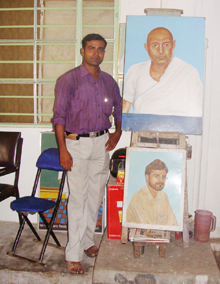 Deals in :
Deals in :
Flex Banner, Signboard, Glow Signboard, Hoardings, Wallrape, Stone excavation , Venyle Print, Digital Prints - Sticker Print, Multicolour Visiting Card, Offset Print - Handbill, Poster, Letter Pad etc.
One definition of fine art is "a visual art considered to have been created primarily for aesthetic and intellectual purposes and judged for its beauty and meaningfulness, specifically, painting, sculpture, drawing, watercolor, graphics, and architecture." In that sense, there are conceptual differences between the fine arts and the applied arts. As originally conceived, and as understood for much of the modern era, the perception of aesthetic qualities required a refined judgment usually referred to as having good taste, which differentiated fine art from popular art and entertainment.
The word "fine" does not so much denote the quality of the artwork in question, but the purity of the discipline according to traditional Western European canons. This definition originally excluded the applied or decorative arts, and the products of what were regarded as crafts. In contemporary practice these distinctions and restrictions have become essentially meaningless, as the concept or intention of the artist is given primacy, regardless of the means through which this is expressed.

Ashish Art Line Publicity
Gaushala Road, Naugachia ,
Bhagalpur, Bihar